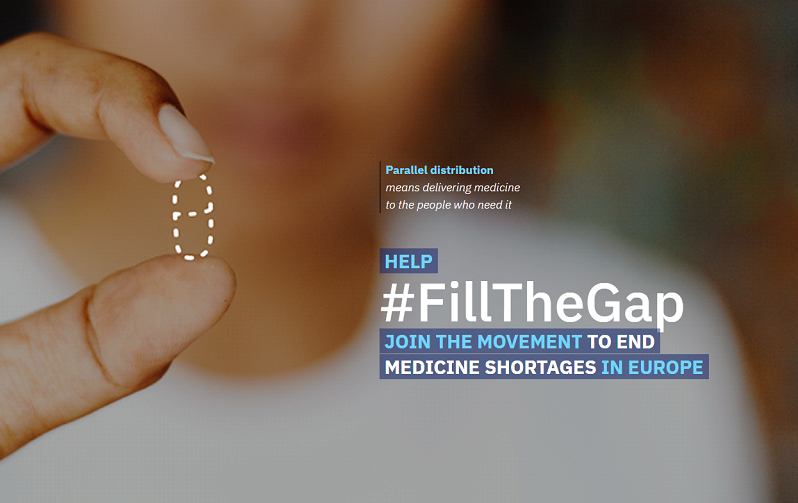Problems in supply of medicines are a big concern for health authorities across the continent. They are an acute threat to the correct functioning of health systems and to the wellbeing of patients in Europe and have multiplied their incidence in recent years. Vast majority of shortages are national or local, not pan-European. Therefore, parallel imports of medicines serve as a de facto solidarity mechanism within the EU and EEA, facilitating the redistribution of medicines in shortage by transporting excess stocks from countries to others where they are needed.
The main causes of shortages both globally and on a European level are well known:
Sources: OECD – Shortages of medicines in OECD countries
European Commission – Future-proofing pharmaceutical legislation — study on medicine shortages
Both parallel importers and parallel exporters are committed to reducing the incidence of medicines shortages and improve the access to key pharmaceuticals. Independent distributors of medicines do not trade in medicines placed on shortage lists in Member States. They focus on excess stocks in given Member States and move medicines from where there is a surplus to countries where there is a need for a certain medicine, acting as a de facto solidarity mechanism within the EU or EEA. Parallel traders’ capacity to repackage and relabel products, in addition with their knowledge of the different markets and distribution network, gives them the chance to swiftly introduce a medicine in the market with supply problems with full safety assurance for the patient.
Most shortages occur in generic medicines with a high demand. At the same time, the share of independent distribution in generics is minimal due to the lower price of generic medicines. A clear majority of independent distribution of medicines happens in branded, on-patent products, that rarely occur on shortage lists. Additionally, the CHESSMEN Joint Action (JA) illustrates in its 2025 report on the analysis of root causes of shortages that the number of shortages caused by parallel trade is in percentage negligible, at most. The results of the analysis of shortage root causes in 2022 and 2023 show that manufacturing issues were responsible for half of the shortages notified (50,6%), followed by unexpected increased demand (16,7%), commercial reasons (11,2%) and distribution issues (10,6%). Parallel trade, which in the report also mistakenly includes exports outside of the EU, is counted among the 10,6% distribution issues, alongside many other factors such as distribution channel structures, quotas, supply chain policies (e.g. DTO), and logistic issues.
Several initiatives have been undertaken by our members to help patients to get the medicines they need via parallel imports, despite shortages. For example, in Bulgaria, the local independent distributors’ association created a platform that receives signals from patients who are not able to find a medicine they need, and within 24 hours, the association lets the patient know if the product is available and in which pharmacy. If the product cannot be found in any pharmacy but a wholesaler has stock of it, they will bring it to the patient. If the product has been withdrawn in Bulgaria, the platform will recommend the patient to go back to the doctor to ask for an alternative treatment or ask the authorities if an emergency parallel import can be arranged.
Adequate supply of medicines to the European patients is safeguarded by the Public Service Obligation (PSO) enshrined in Directive 2001/83 on medicinal products for human use, which ensures that the holder of the marketing authorisation for a medicinal product and distributors of this product must ensure appropriate and continued supply of the product to pharmacies and other distributors of medicines so that the needs of patients in a given Member State are covered. In practice, the PSO makes sure that defined distributors of medicines always have a certain amount of supply to distribute to patients, and that they have an obligation to make sure of this and not to export these quantities.
As an extra safeguard to ensure that exports of medicines do not become a driver of shortages, most EU Member States have put in place export restriction legislation. Some of these restrictions have been deemed by the European Commission to be against the EU Treaties (Articles 34 and 35 TFEU), while other restrictions are considered appropriate and proportionate, according to Article 36 TFEU. Affordable Medicines Europe is fully committed to ensure that parallel exports never cause a shortages and work proactively with the European Commission and Member States to ensure this is the case.

Affordable Medicines Europe illustrates its efforts to alleviate medicine shortages through #FillTheGap. #FillTheGap presents successful examples of how independent distribution of medicines has mitigated shortages and improved patient access to medicines. Read more by clicking the below link to the website or by following the campaign @FillTheGap_EU on X.